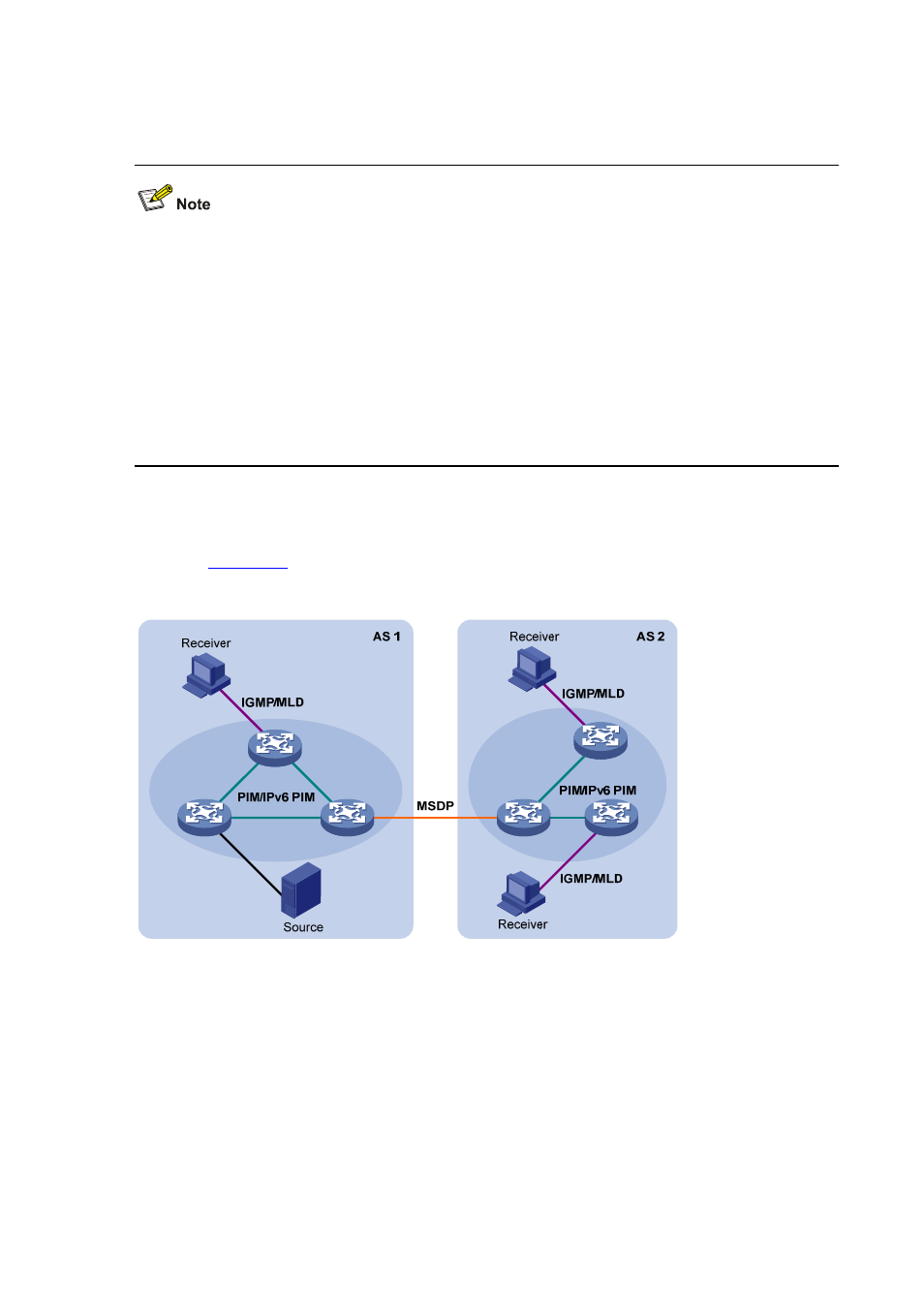Multicast protocols, Layer 3 multicast protocols – H3C Technologies H3C WX6000 Series Access Controllers User Manual
Page 316

28-10
Multicast Protocols
z
Generally, we refer to IP multicast working at the network layer as Layer 3 multicast and the
corresponding multicast protocols as Layer 3 multicast protocols, which include IGMP/MLD,
PIM/IPv6 PIM, and MSDP; we refer to IP multicast working at the data link layer as Layer 2
multicast and the corresponding multicast protocols as Layer 2 multicast protocols, which include
IGMP Snooping/MLD Snooping, and multicast VLAN/IPv6 multicast VLAN.
z
IGMP Snooping, IGMP, multicast VLAN, PIM and MSDP are for IPv4, MLD Snooping, MLD, IPv6
multicast VLAN, and IPv6 PIM are for IPv6.
This section provides only general descriptions about applications and functions of the Layer 2 and
Layer 3 multicast protocols in a network. For details of these protocols, refer to the respective chapters.
Layer 3 multicast protocols
Layer 3 multicast protocols include multicast group management protocols and multicast routing
protocols.
describes where these multicast protocols are in a network.
Figure 28-7
Positions of Layer 3 multicast protocols
1) Multicast management protocols
Typically, the internet group management protocol (IGMP) or multicast listener discovery protocol (MLD)
is used between hosts and Layer 3 multicast devices directly connected with the hosts. These protocols
define the mechanism of establishing and maintaining group memberships between hosts and Layer 3
multicast devices.
2) Multicast routing protocols
A multicast routing protocol runs on Layer 3 multicast devices to establish and maintain multicast routes
and forward multicast packets correctly and efficiently. Multicast routes constitute a loop-free data
transmission path from a data source to multiple receivers, namely, a multicast distribution tree.